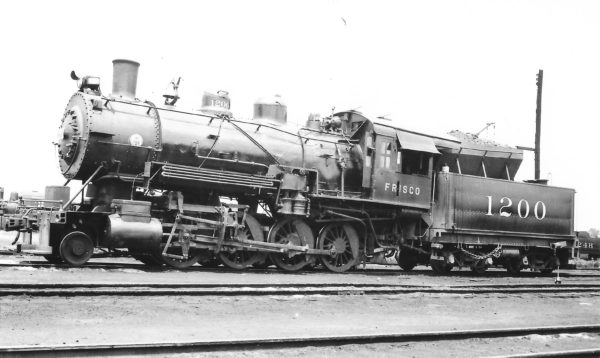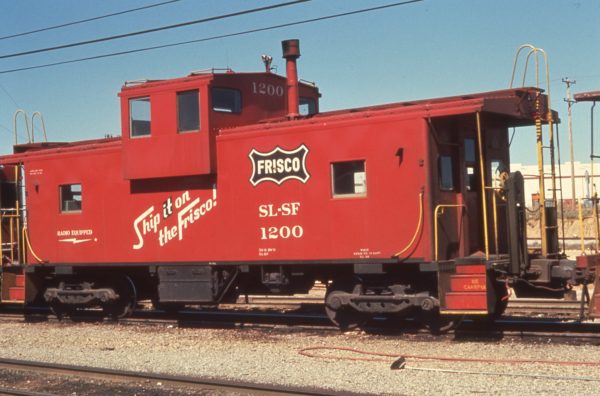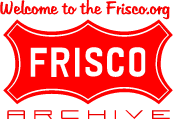Search Results for: 1200
2-8-0 1200
Caboose 1200
Caboose 1200
Caboose 1200
Caboose 1718

Caboose 1718, Kansas City, Missouri in August 1976.
Location is Kansas City, Missouri.
This is the Mechanical Department’s caboose track in 19th Street Yard, mile post 0.0 (MP 0.0). In later years this caboose track was the former coach yard track 5 ½. It was located near the southeast end of the yard, just south of the diesel shop. It sat adjacent to the company’s four diesel fuel tank car unloading spots. In this view note the four dipping fuel unloading standpipes. To unload a tank car the flexible upper inverted V-shaped section was extended over the track centerline and lowered through the car expansion dome to suck out the fuel load.
The overhead horizontal pipe is a steam line for heating the pump house and storage building on the right. It is also used during cold weather to warm and improve the flow characteristics of fuel and lubricants. The pipe extends southward from the boiler room in the southwest corner of the diesel shop. The red building on the left houses firefighting equipment. Typical equipment inside included a large capacity wheeled foam fire extinguisher and a wheeled hose cart with at least 100’ of 2 ½ inch firehose.
Originally there were 11 tracks in the 19th Street coach yard. The tracks numbers increased to the east toward the bluff. The Frisco was one of two Kansas City railroads that operated their own coach yard facilities. The other was the Acheson, Topeka and Santa Fe (ATSF). All other area railroads relied on the KCT’s coach yard facilities and services near their roundhouse on Southwest Trafficway. On the adjacent track, NP 8962 is a 40’ general service (XM class) boxcar sitting on the Frisco’s former coach yard track 6.
Additional cabooses visible in the image include SLSF 1342, 12?5, 1708, 1213 and 1339. Cabooses in the 1200 series (SLSF 1200-1292) and 1700 series (SLSF 1700-1725 and 1776) are road / pool service cabooses. The cabooses in the 1300 series (SLSF 1300-1345) are terminal / transfer service cabooses.
Frisco’s 19 Street Yard is located in the West Bottoms or Central Industrial District. This area is located below downtown Kansas City which sits high on a bluff to the east. To the west is the Kansas River near its confluence with the Missouri River at Kaw Point. The roadway bridge in the far distance below the horizon line and above the silver maintenance of way car is 23rd Street / Avenida Cesar E. Chavez. To the west, just across the state line and Kansas River this roadway becomes Kansas Avenue in Kansas City, KS.
Further in the distance, seen below the 23rd Street bridge and to the right of SLSF 1339, is the east approach to the Kansas City Terminal (KCT) Railway’s double deck, four track (two tracks on each deck level), hydraulic lift span bridge over the Kansas River. This bridge is located between KCT’s interlocking towers at Santa Fe Junction, Tower 3, and Adams Street Interlocking, Tower 14. Both interlocking towers are on the lower ground level. On the elevated upper deck level the bride is located between State Line Junction and Hi-Line Junction.
View is looking southwest.
Special thanks to Mark Davidson.
SW9 312
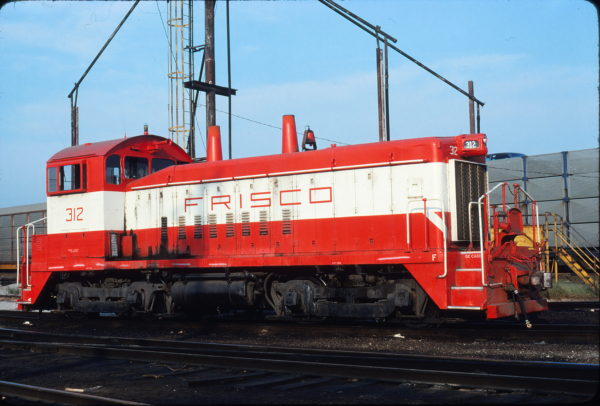
SW9 312 at St. Louis, Missouri in May 1980.
The locomotive is sitting at the Mechanical Department’s service tracks area at Lindenwood Yard. This facility is on the north side of the yard, east of the diesel shop. The sand tower is at the end of the locomotive fuel pad. The locomotive is facing west/southwest.
A number of interesting locomotive details are visible in this view: On the cab these include the whip radio antenna, yellow cab light for identification, upper cab front vent next to the horn, low under floor air filter on the cab front and engineer’s all weather window extension. Lettering on the below cab floor access door specifies the locomotive’s make, model, horsepower and assigned maintenance location. The lettering reads “EMD – SW9 – 1200 HP” on the top line, with “ST. LOUIS, MO” underneath.
On the forward car body hood are the bell with air operated ringer, radiator water fill offset to the far side, 3 hood lift rings positioned along the handrail and the blank capped lower lamp of the headlight. Note the Frisco replaced two doors adding louvers to improve ventilation. These were added near the main generator (door left of the “F”) and air compressor (door with the “C”).
The front pilot also includes an elevated multiple unit step with associated handrail modifications. In this case the drop step is in the up position and the crossover chain is positioned across the end handrail opening for crew safety. To its left is the MU electrical receptacle, crossover step light and associated conduit. There are also added MU fittings and air hoses either side of the coupler near the train line air hose.
Below the frame side sill details include a ground light (below cab), front and rear jacking pads (lettered above “Lift Here”), air tank filter, fuel filler pipe, emergency fuel cut-off switch, fuel tank and main air reservoir tanks with associated piping. Above the front truck are two “L” shaped brackets to hold a re-rail frog. One was not hung on this side of the locomotive in this photograph.
The view is looking south southeast.
Special thanks to Mark Davidson.
Boxcar 12050
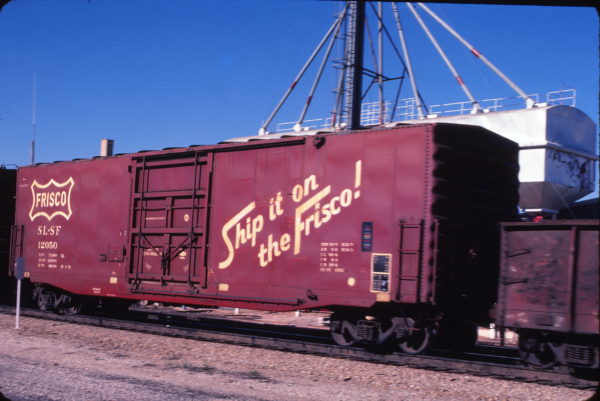
Boxcar 12050 at Aurora, Missouri in December 1979 (Bob Dye).
SLSF 12050 is one of 200 similar loader equipped boxcars (XL) in the series 12000-12199. The cars were built by Pullman-Standard (PS) at their plant in Bessemer, Alabama in early 1970.
These 77-ton cars had an inside length of 50 feet 6 inches with a capacity of 4,952 cubic feet. The interior featured Evans DF-2 (damage free) loader belts, style G floor clips and Azee loading anchors. Originally they had 10 foot smooth surface plug doors.
Unlike similar cars built by American Car and Foundry (ACF) these cars were not equipped with cushion underframes. It is believed that this was due to their primary assignment hauling paper, particleboard and plywood; commodities which are generally less susceptible to impact damage. Many of the cars were assigned to MacMillan-Bloedel Limited for service at their mill plant at MacMillan, Alabama.
The cars were originally delivered in yellow paint with black lettering, outline coonskin heralds (yellow background) and the “Ship IT on the Frisco!” slogan. The slogan featured the “IT” in white with a contracting black background.
During a class program maintenance visit to the shop most of the cars received new exterior post plug doors. At this time they were also repainted red with all white lettering. The photo here features the latter door and paint scheme.
Special thanks to Mark Davidson.

